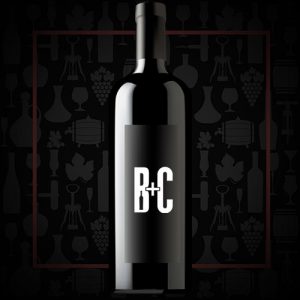Cellar Profile
In the late 1990s, Naji Boutros and his wife Jill decided to leave his businesses in London and New York and return to his family’s ancestral home in Bhamdoun Village. Long the playground of the well-to-do in Lebanon and nearby Arab states, with thousands of luxury hotel rooms and gardens, Bhamdoun had been largely abandoned during the internecine wars that plagued Lebanon and the whole area was in disrepair. Thanks to the Boutros’ work and commitment, the area is again welcoming tourists from around the world, and the village is a bustling, idyllic family place. The carefully-planted, organically-farmed vineyards are dry farmed, which is especially challenging as there is little to no rain during the summer growing season. However, this extra stress, while significantly reducing yields, leads to wines of supreme quality and structure. With 120 plots in the valleys around the village, there are plenty of excitingly different terroirs to choose from when making their final blends. Focusing on French varieties and using biodynamic principles, Chateau Belle-Vue’s small production has Old World, classic European sensibilities as well as that wonderful exotic spiciness that seem to be the hallmark of Lebanese wines.
Region
The Bhamdoun Village region of Mount Lebanon is a 20 minute drive from bustling Beirut and has been a favoured vacation destination for Beirutis for a long time. Sitting near the Mediterranean coast. the region enjoys huge diurnal swings between the heat of the day and cool evenings. The rain and snow of November to April is followed by desert-like summer conditions, where any kind of viticulture must rely upon deep underground reservoirs of water to feed the vines. Winemaking here is considered “heroic”, as the vineyards sit on hacked out rock terraces between 950 and 1250 masl. A relatively tiny wine region, the soils are calcareous, mostly clay, sand and limestone, all covered with varying-sized pebbles and rocks. Dry farming results in tiny berries, giving wines of structure and power with firm tannic backbone.
Vineyard
Chateau Belle-Vue sources from 120 different small plots of organicalty farmed grapes grown in the limestone and mineral-rich soils aound the village of Bhamdoun. No herbicides or pesticides are employed and crop cover is used between rows to ensure no loss of topsoil. The vineyards are dry-farmed, which is risky given desert-like summer conditions but which results in smaller yields, thicker skins and exceedingly high-quality berries. The vineyards are planted on terraced slopes ranging from 950 to 1200 masl.
Varieties
A traditional Bordeaux blend of Cabernet Sauvignon and Merlot. Cab Sauv, the progeny of a crossing between Sauvignon Blanc and Cabernet Franc, is widely considered to be one of the finest red grapes, giving wines of structure and power. Thick-skinned with small berries, the juice-to-skin ratio is low, leading to firm tannins and care must be made to ensure the wines do not become astringent. Provided there is enough sun during the growing season, the typistic dark fruits are generally ample enough to stand up to the firm character. Merlot can also provide structure, but is more round and opulent when given sun, and its fruit character is much more prevalent. The combination of these two varieties results in wines that are often better than the sum of their parts, with Cab Sauv providing the backbone and Merlot the earlier-drinking plushness that can make casual sipping enjoyable.
Winemaking
Hand-harvested fruit is brought to the winery in small bins to avoid the weight of the grapes pressing out too much juice. The grapes are sorted and de-stemmed, before macerating in stainless steel with regular punchdowns of the cap. The juice undergoes spontaneous fermentation using indigenous yeasts. After malolactic conversion is completed, the wine is transferred into new French oak barriques for at least 2 years of aging. It is bottled unfined and unfiltered and then aged in bottle for at least another 5 years in the winery cellar before release.
Tasting Notes
Rich and inviting aromas of black cherry, cocoa powder, plum and vanilla. The ample palate is weighty, but balanced, with black berry, anise, plum and baking spices. The tannins have mellowed and softened, but there is still loads of structure. The acids show through the layers of rich fruit and long, kirsh-inflected finish. Open early, decant and enjoy with grilled sirloin or other richly marbled meats.

 info@buyersandcellars.ca
www.buyersandcellars.ca
info@buyersandcellars.ca
www.buyersandcellars.ca